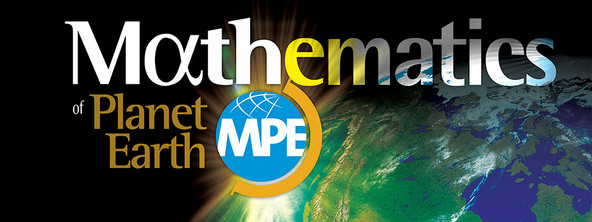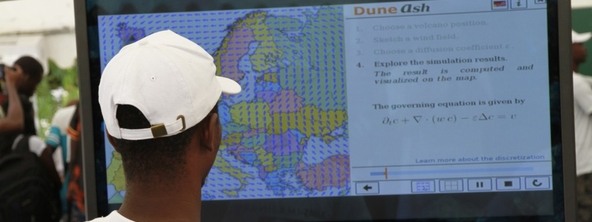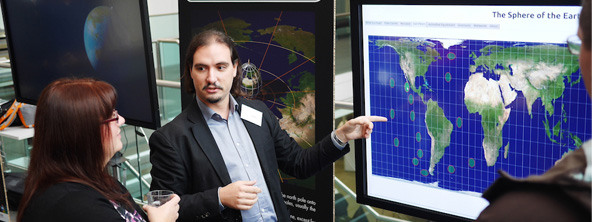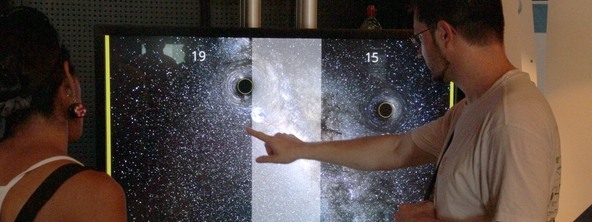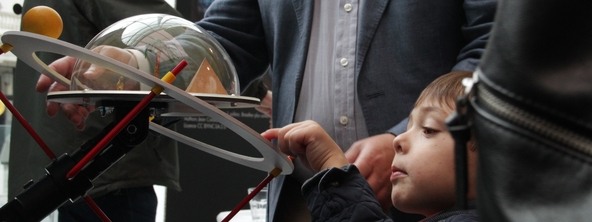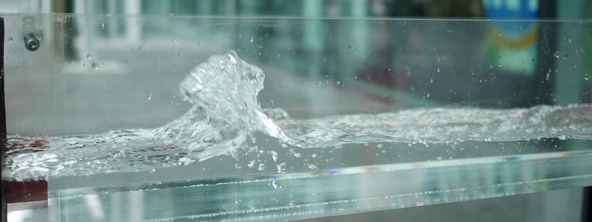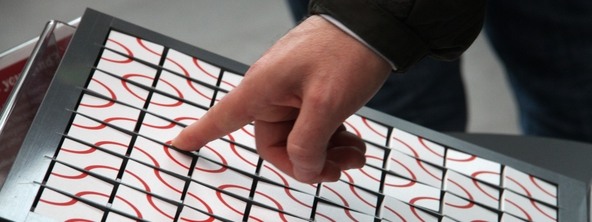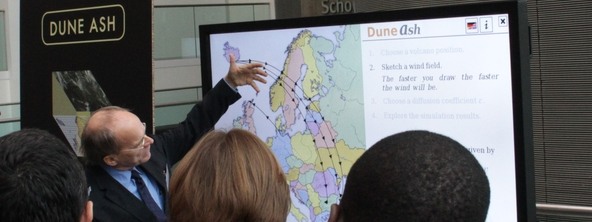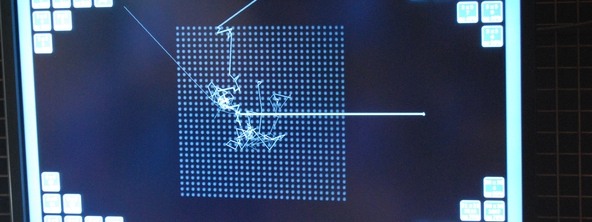New MPE-Exhibits
projeler
Durum
Nasıl katılınır ?
Create a user and upload your exhibit to the platform. Send us an email to mpe@imaginary.org
More information below on the left.
extended Deadline: July 16, 2017
Submit your exhibition modules to participate in the new competition for Mathematics of Planet Earth (MPE). The best modules will be awarded and will be featured in the already successful MPE exhibition. There will be a special prize for Africa-related exhibits.
Humankind has been curious about planet earth from its infancy and has used mathematics to understand the planet’s ecosystem and to organize civilisation in an analytical way. Recently, it has become apparent to us that our planet is in danger due to global changes. To raise awareness of these changes an open and free exhibition with a worldwide scope has been devised by an international community of mathematicians and scientists. The modules of the “Mathematics of Planet Earth” Open Source exhibition can be reproduced and adapted by science museums and schools around the world.
Mathematics of Planet Earth (MPE) is an initiative of mathematical science organizations from around the world designed to showcase the ways in which the mathematical sciences can be useful in tackling our world’s problems. The exhibition “Mathematics of Planet Earth” consists of modules submitted by the community. It started with a competition in 2012, the winning modules from that competition were presented at the official opening event of the first MPE exhibition in Paris in March 2013.
Competition and OrganizersAt the Next Einstein Forum (NEF) Global Gathering in March of 2016, it was announced that IMAGINARY, UNESCO, the International Mathematical Union (IMU), and the International Commission on Mathematical Instruction (ICMI) would open this second international competition of new exhibit modules to enrich the MPE exhibition. This competition aims to address the challenges in Africa, as well as in other regions of the world.
PrizesThemes1st prize: 5,000 USD
2nd prize: 2,000 USD
3rd prize: 1,000 USD
Special prize for African topic: 2,000 USD
To stimulate imagination on the many domains where mathematics plays a crucial role in planetary issues the following (non- exhaustive) four themes are proposed:
I. A planet to discover: oceans, meteorology and climate, mantle processes, natural resources, celestial mechanics…
II. A planet supporting life: ecology, biodiversity, evolution…
III. A planet organized by humans: political, economic, social and financial systems, organization of transport and communications networks, management of resources, energy…
IV. A planet at risk: climate change, sustainable development, epidemics, invasive species, natural disasters, risk analysis…
Types of museum-exhibits (modules)
Modules submitted to this competition can be of one of the following four forms:
- Program. An interactive software exhibit to be used either on the web or in a museum.
- Hands-on. A module explaining how to realize a physical exhibit in a museum.
- Film. A short video that can be shown in an exhibition.
- Image gallery. A collection of images accompanied by a mathematical description.
Some examples of the type of modules we are seeking can be found on the MPE exhibition page. Additional ideas for new modules can be found in the document 31 ideas of modules for MPE2013 by Christiane Rousseau.
How to participate
Participants can be individuals or groups of individuals, institutions, schools or nonprofit organizations. Contributions developed by profit organizations can be shared with us to be included in the open source exhibition, but will not participate at the competition.
The licenses used for the submitted modules must be Creative Commons (BY-NC-SA, BY-NC-ND, or similar) for images, films, blueprints… or Free/Open Source software licenses (GPL, Apache, MIT…) for programs.
Technical Advice
Once you have an idea for an exhibit, start developing it and make early prototypes. Pay early attention to a few technical/formal aspects of your module to avoid later problems:
- If you are developing a software program, which technology/language is more appropiate (to you and to the future users)? The more flexibility on the program (multi-platform, use of standard libraries, adaptable user interface, etc), the more likely is that it can be used on an exhibition and by the public. Recall that you will need to release it under an open license.
- If you are developing a physical exhibit, you need to prepare detailed instructions to reproduce it (technical documentation) as well as the panels, descriptions and/or didactic activities to be used on an exhibition (exhibition documentation). Document all the process of creation (notes, photographs) so that it is easier to you to write it down when it is finished.
- Regardless of the type of module, you must always include in your submission a Documentation text. This document should describe your module, the background mathematics, the possible interaction/activities with the visitors, a didactics section, the author and licensing information, and any other section you consider relevant.
- You are free to choose the language of your exhibit (at least English is recommended, but not mandatory), but it will be very appreciated the possibility to add new languages in a future. If you design your exhibit with this in mind, we will be able to add translations to spread your exhibit into more countries. This is especially important for software and films (soundtrack, subtitles, on-screen texts…).
Submit your Module
Once you have a working prototype, and before the deadline, you need to create a User in the imaginary.org platform. From there, you can upload your material to IMAGINARY, but it will not be public until you select Publish. Once your material is on IMAGINARY, send us an email to mpe@imaginary.org to let us know that your submission is ready. If we spot a major flaw or a needed improvement in your submission and there is still time, we will contact you with our suggestions. You can edit and improve your submission until the deadline (extended deadline: July 16, 2017).
We strongly recommend to create a short video in which you explain your exhibit. It will be very helpful for the jury as well as the audience to understand your exhibit in the way you intended it. It can be a simple screen grab for a software exhibit or a cellphone video of you standing in front of your physical exhibit explaining it (in English). The video should not be longer than 5 minutes, explaining only the key features and basic guidelines for using your module. You can upload it to youtube or vimeo and integrate a link into the content page at the IMAGINARY platform.
The Jury
Once the deadline is passed, the submissions will be made public and an independent international jury will evaluate the candidates to award the prizes. Winners and selected modules will be part of the new MPE exhibition.
The jury will be:
- Mireille Chaleyat-Maurel, Emeritus Professor University Paris Descartes, Paris, France
- Eduardo Colli, University of Sao Paulo, Brazil
- Mama Foupouagnigni, Professor of Mathematics, University of Yaounde I, Cameroon Center President, AIMS Cameroon
- Ansie Harding, Department of Mathematics and Applied Mathematics, University of Pretoria, South Africa
- Hans G. Kaper, Georgetown University, Washington, DC, and Founding Chair, SIAM Activity Group on Mathematics of Planet Earth, USA
- Sreekar Vadlamani, TIFR Centre for Applicable Mathematics, Bangalore, India
Examples from the first MPE competition
The winners of the first MPE competition were:
The Sphere of the Earth by Daniel Ramos
This interactive exhibit explores the science of cartography and the geometry of the sphere.
Dune Ash by Prof. Dr. D. Kröner and his team at University of Freiburg
This is an interactive simulation of a volcano eruption in Europe.
The Future of Glaciers by Guillaume Jouvet, Chantal Landry, and Antonia Mey
In this exhibit, the background of glacier modelling is explained.
They were exhibited in numerous exhibitions, here is a selection of the biggest ones:

